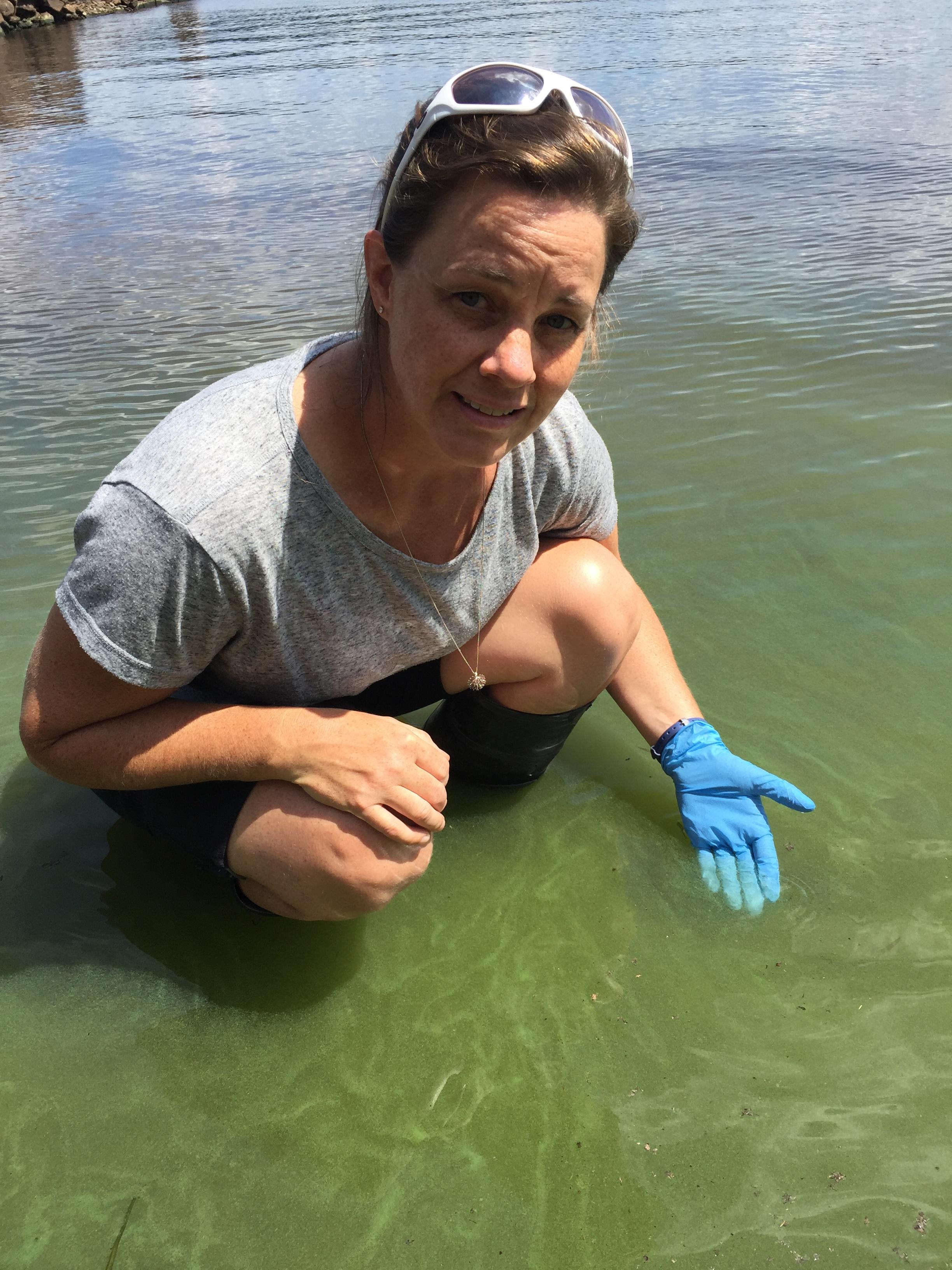Three dogs died in late July 2018 right after coming into contact with blue-green algae in the St. John River in the eastern province of New Brunswick. Blue-green algae is a misnomer.
The substance is actually not algae but a form of bacteria called cyanobacteria which is common in both salt and fresh water in and around Canada and in other areas from the topics to the Arctic. There are many kinds, most of which are beneficial providing food for various organisms and producing oxygen which goes into the air we breathe.

Prof. Janice Lawrence says there are cyanobacteria which emit toxins that can affect the skin, others the liver or nervous system. (Kristen Hawkes)
Toxins can cause irritation, death
However there are a few species that produce compounds that are toxic. Depending on the kind they may cause skin irritation, nausea, vomiting and liver problems, or they may affect the nervous system causing twitching, convulsions and respiratory distress leading to death. It was these effects on the nervous system which killed the dogs.
Warming temperatures increase growth
The conditions that favour the growth of cyanobacteria are becoming more common, more frequent, and are lasting longer, says Janice Lawrence, a professor of biology at the University of New Brunswick. “The conditions that enhance their growth are things like warmer temperatures. We have an increasing average temperature on the planet and a lot of places have longer ice-free periods of time, on lakes for example, which basically just means a longer growing season for these organisms. And they do like warm temperatures and can grow quite rapidly in them.”
Growth is fed by detergents, fertilizers and manure
Growth is also spurred by nitrogen and phosphorus which find their way into water systems from detergents, personal care products, fertilizers and manure from farms.
The Canadian government has taken steps to limit phosphorus use, for example in detergents. Lawrence says there is not much to be done once cyanobacteria produce toxins except to wait until temperatures go down and they stop. But she says it helps to plant buffer-zones near waterways that include plants that soak up the nutrients that help cyanobacteria to grow rapidly.







For reasons beyond our control, and for an undetermined period of time, our comment section is now closed. However, our social networks remain open to your contributions.